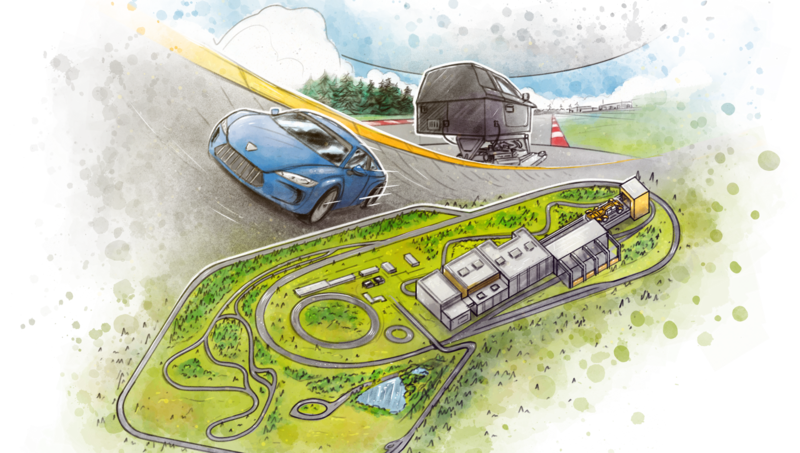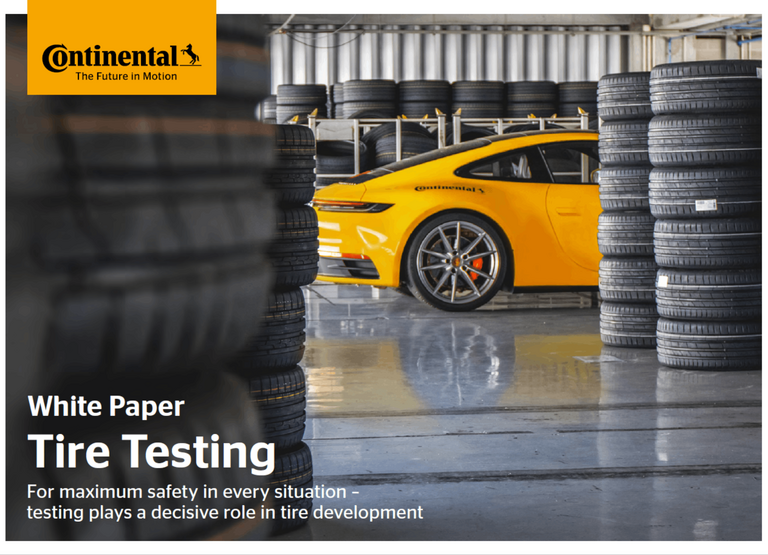Whitepaper Provides Comprehensive Information about Tire Testing at Continental – From Then Until Now
- Paper looks back at history and provides an outlook on test methods of the future
- More and more tire tests can be automated and virtualized
- "Extensive testing is crucial to assessing the performance of our tires. And also to ensure high quality and safety," said Martin Welzhofer, Head of Global Tire Testing at Continental Tires
Hanover, Germany, May 15, 2024. The shortest braking distances on wet and dry roads, quiet rolling noise, low rolling resistance and a long service life – all of these properties are found in good tires. They are subjected to extensive testing as part of development and the quality control process. The company’s Tires group sector has summarized what such test procedures look like at Continental in the new whitepaper "Tire Testing". The paper provides insights into the almost hundred-year history of tire testing at Continental. It also sheds light on the development and use of current test methods and provides an outlook on the future of testing.
"We cover around 25 million test kilometers with new tire models every year. That is the equivalent of going around the earth 625 times. Extensive testing is crucial to assessing the performance of our tires. And also to ensure high quality and safety," explained Martin Welzhofer, Head of Global Tire Testing at Continental Tires.
Objective and subjective tire tests – from braking performance to rolling noise
A distinction is made between objective and subjective tire tests. Objective tire tests include laboratory tests, but also extensive braking tests on wet, icy, snowy and dry roads. Subjective tire tests are test drives to determine the road performance of the tires. These are carried out by professional test drivers on Continental’s worldwide test tracks. The stability and handling of the vehicle with the respective tires are analyzed: on different surfaces at differing times of the year, on straight sections, in curves and at high speeds.
This type of test also looks at the tire’s rolling noise. Because even if the tire shows nothing unusual in automated tests under laboratory conditions, disturbing noises can occur that become noticeable only when driving. The whitepaper provides detailed insights into both types of tests and the influencing factors.
Save time and resources with virtual tests
Thanks to digitalization, increasing numbers of test procedures in the tire development process can be automated and virtualized. Continental laid the first building block for automation back in 1968 with the first driverless test vehicle. Today, digital testing methods in particular play a major role in the company’s tire development. The driving simulator at the Contidrom test site near Hanover is the best example of this. The high-tech system is a driver-in-the-loop simulator (DIL), which calculates the exact driving dynamics parameters of the tire and the respective test vehicle. Thanks to its high level of movement, the simulator can provide Continental’s test drivers with subjective driving impressions that are comparable to tire tests on a real test track. Such virtual testing methods enable Continental to adapt tire solutions even more efficiently and precisely to the requirements of its customers. And that even before the first tire has been built. This saves time and valuable resources.
Extensive test procedures lead to success
Extensively tested by Continental, approved by experts: Continental regularly tops the lists of independent tests with its tires. For example, the seventh generation of the PremiumContact summer tire line is currently making an impression on the experts. In March of this year, the Auto Club Europa (ACE) named the PremiumContact 7 the test winner with the shortest braking distances, convincing handling thanks to good grip as well as good and balanced steering response – for all drive types. In order to deliver such convincing performances, particularly precise and exactly reproducible test methods are required. The importance of extensive testing before the start of production is also demonstrated by Continental’s flagship in terms of sustainability: the UltraContact NXT is the most sustainable production tire to date. With up to 65 percent renewable, recycled and mass-balance-certified materials, the tire combines a high proportion of sustainable materials. All 19 dimensions received the top EU tire label rating ("A") in rolling resistance, braking in wet conditions and exterior noise. The UltraContact NXT thus shows how safety, performance and sustainability go hand in hand.

Henry Schniewind
Head of External Communications
Continental Tires

Katharina Bühmann
Communications Manager Technology & Innovation
Continental Tires



